Titanium is a strong, lightweight metal that is often used in aerospace and medical applications. However, welding titanium can be a challenge due to its high reactivity and tendency to warp under heat.
But with the right equipment and techniques, it is possible to achieve a high-quality weld. In this article, we will take you through the process of GTAW or TIG welding titanium, including tips and tricks to help you achieve a strong, clean weld every time.
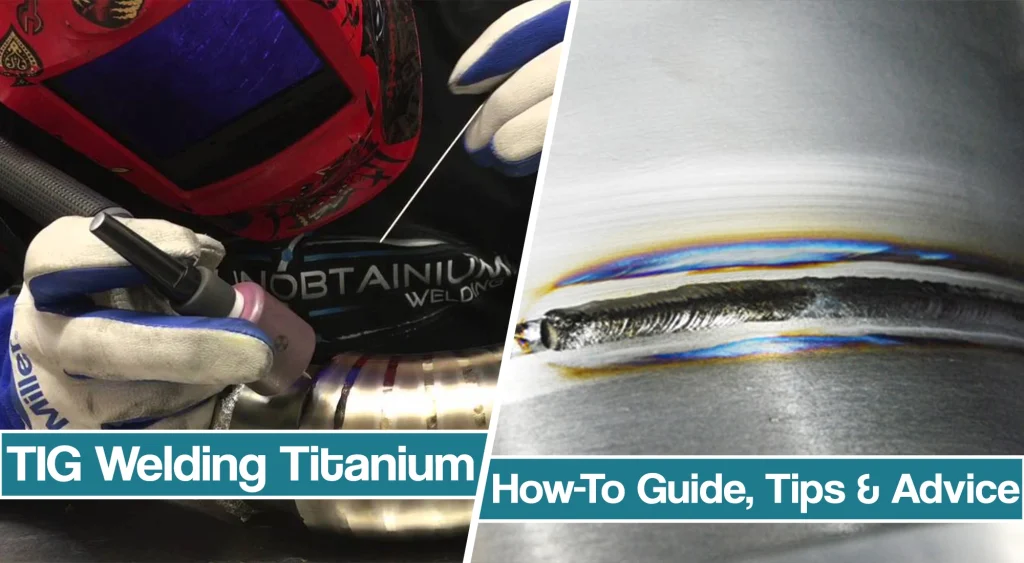
Whether you’re a professional welder or a DIY enthusiast, this guide will give you the knowledge you need to tackle titanium welding with confidence.
What is Titanium, and Why is it Important to Welders
Titanium is a silvery-white, strong, corrosion-resistant transition metal that is known for its high strength-to-weight ratio. Compared to stainless steel, titanium is an equally strong yet lighter metal, and it still offers superior corrosion resistance than aluminum.
Advantageous properties make it an ideal material for use in aerospace, medical, and other industries. Titanium is highly weldable and can be joined using several different welding techniques, including TIG (tungsten inert gas) welding.
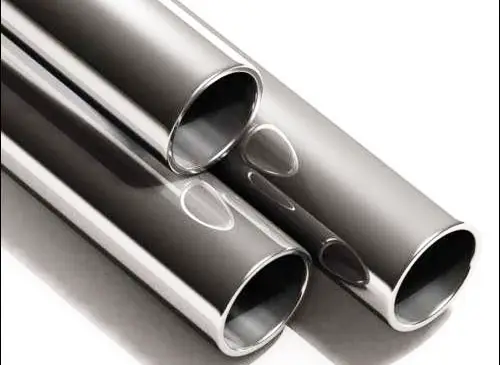
Is it hard to TIG Weld Titanium?
The correct answer is both yes and no. Titanium has similar properties to stainless steel or aluminum, so you need a similar approach when welding. That includes back purging and removing the oxide layer prior to welding. So if you are familiar with TIG welding aluminum or stainless steel, you can TIG weld titanium quite easily.
However, TIG welding titanium can be difficult to weld due to its properties. Titanium is a highly reactive metal, meaning it reacts with oxygen and nitrogen in the atmosphere when exposed to heat. This can lead to porosity and cracking in the weld joint if not handled correctly. Therefore, the cleanliness of the entire welding operation, including pieces, tungsten, surroundings, and shielding, is crucial for a successful titanium welding operation.
That’s why many choose TIG welding, but there are alternatives such as electron beam welding, resistance welding, friction welding, laser-beam welding, plasma arc welding, or you can just MIG weld titanium. Since our topic is TIG welding, we will focus more on successful TIG welds on titanium, titanium tube or other pieces.
How To TIG Weld Titanium
Tungsten Inert Gas (TIG) or Gas Tungsten Arc Welding is a popular welding process used to join titanium alloys due to its high level of accuracy, precision, and repeatability. To TIG weld titanium, you need specific welding equipment, including a TIG welding machine, 2% thoriated tungsten electrodes, highly clean, pure argon shielding gas, and filler metal.
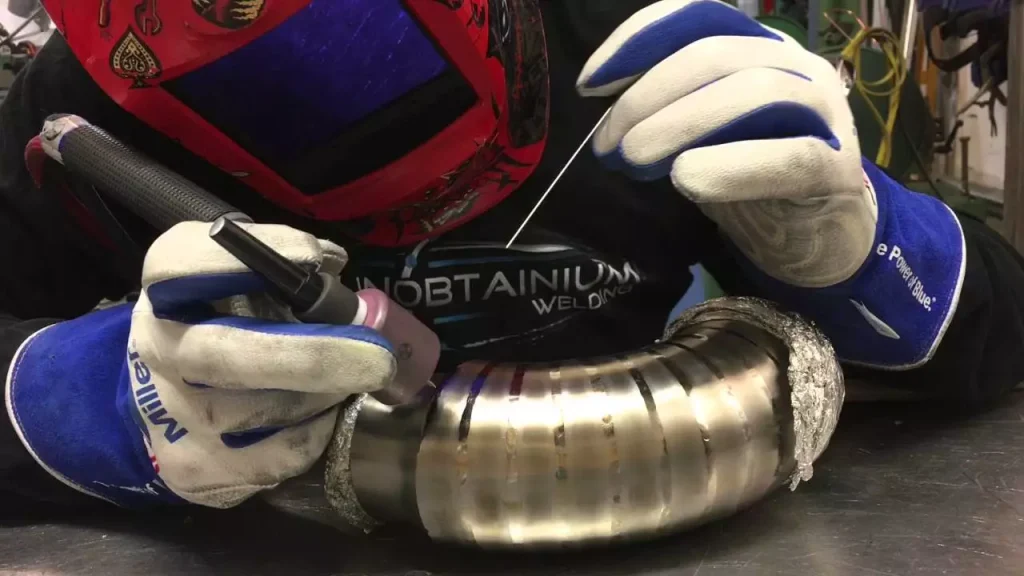
The first and most crucial step is to prepare the surfaces for welding. This involves cleaning the surfaces with a degreaser or wire brush. Make sure everything is clean, including surroundings, filler wire, tungsten, and proper shielding of the molten weld pool is employed.
The next step in how to TIG weld titanium is to set up the TIG welding machine. The current should be set depending on the thickness of the material being welded, usually 50-250 amps.
Torch needs a high-frequency start to avoid inclusions. A good practice is to let 2-5 seconds of pre-flow to ensure that shielding gas is properly covering ad protecting the weld area. These conditions including both welding and taking.
As you move along the joint, it is important to periodically dip into the puddle of filler metal that is being formed to ensure that it remains deep enough for proper fusion. Do not remove the filler wire out of the zone protected by the shielding gas, because you risk contaminating the weld pool. If it happens, stop, cut, or clip the top and start again.
Add a post-flow of 20 to 25 seconds for a weld pool to cool off under the protection of the shielding gas.
Once you have completed your weld, you need to allow it to cool down before inspecting it for any signs of cracking or other defects. Unsuccessful welds are highly brittle, you can break them with your hands. Another sign of poor weld is the color, but we will explain each part for successful welding further in the text.
Why Is Cleanliness Crucial When TIG Welding Titanium?
Cleanliness is essential for TIG welding titanium. Before you begin welding titanium due to its reaction to contaminants in the weld pool, studies show that even small traces of oxygen can reduce the strength of a weld joint by up to 20%.
Similarly, studies have shown that welds with a 0.4% nitrogen content had up to 50% lower fracture toughness of hot titanium compared to welds with 0.1% nitrogen content. Hence it is essential that all contaminants are minimized during TIG welding titanium to avoid weld failure.
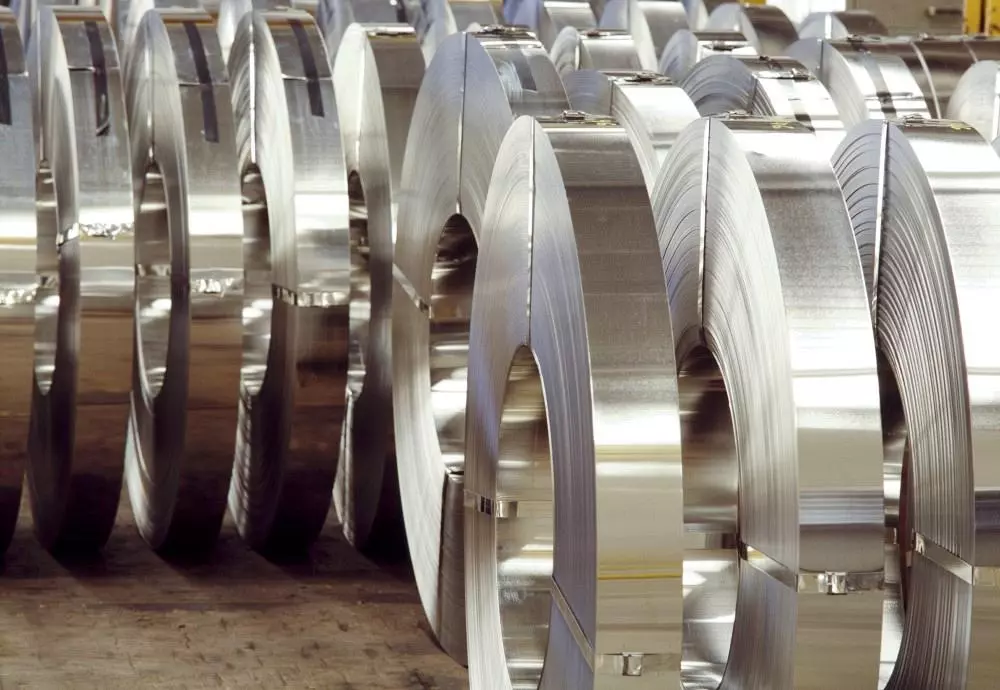
Impurities, surface oxides, and/or contaminants from the surrounding atmosphere can cause porosity, cracking, and a decrease in joint strength and fracture toughness. To properly clean and prepare parts for TIG welding titanium, the joint should be cleaned of any oils or grease with a solvent or degreaser prior to welding.
Any oxide layers on the surface of the titanium should be removed using a mechanical method such as grinding or sanding. Oxides have a higher melting point than the base metal, so they can interfere with the properties of the weld, and that’s why it is crucial to remove them prior to welding. You should use a dedicated stainless steel brush, carbide file, and carbide deburring tool (like carbide rotary burrs) for proper oxide removal.
Once cleaned, joints should be carefully preserved until the weld operation. You should minimize the handling and make sure to start welding as soon as possible after the cleaning. When not being worked on, weld joints should be kept covered with paper or plastic to avoid the accumulation of contaminants.
Shielding The Titanium Weld
Besides cleaning, shielding is essential when TIG welding titanium to protect the weld pool from contaminants. Shielding gas used for TIG welding titanium depends on the application, but most commonly, argon or helium is used. Unlike with other metals or MIG welding, titanium will require all-around argon gas shielding to eliminate any absorption of oxides, contaminating and making the weld weak. All-around coverage is done by employing several layers of shielding, including:
- Primary shielding includes argon or argon/helium mixture that comes out of the welding torch. The large cup is necessary to provide adequate shielding for the entire molten weld puddle. The gas lens provides uniform, nonturbulent inert gas flow.
- Secondary shielding is provided by trailing shields. Trailing shields are generally custom-made to fit a particular torch, and they protect the solidified titanium weld metal and associated heat-affected zones until the temperature reaches 800°F (427°C) or lower.
- Back shielding is done using an additional gas, usually argon, which is directed at the back side of the weld area and away from the molten pool of metal. This keeps contaminants out of the weld zone, preventing oxidation and helping to ensure a strong and durable weld joint.
The gas flow rate should also be adjusted according to the size of the weld area. Typically, a flow rate of 15-20 cubic feet per hour (CFH) is recommended. In addition, it is important to ensure that there are no gaps in the shielding gas coverage over the weld area.
TIG Welder For Titanium Welding
The most effective TIG welder for titanium will be one with a maximum output current of at least 200 amps and a stable welding arc length. It should also have an adjustable amperage range, high-frequency start, as well as pulse and pulse frequency control features.
Titanium welding with TIG will require DC- (Direct current electrode negative – DCEN) polarity, which is the most common with both inverter and transformer-type TIG machines. The pulse feature can help you minimize heat input and reduce heat buildup in the weld area, resulting in a higher-quality weld with less distortion and porosity. Foot pedal or hand control remote current adjustment can give better control over heat input into the weld area and offer greater precision when welding thin materials.
What Is The Best Filler Rod For Titanium?
The best filler rod for titanium welding is a titanium filler rod covered by AWS A5.16-70. Titanium filler rods come in different grades, including ERTi-1, ERTi-2, and ERTi-5. The grade used depends on the base material being welded, as each grade has different mechanical properties that make it more compatible with specific base materials.
For example, ERTi-1 is best suited for welding on pure and softer titanium alloys such as Grade 1 or Grade 2, while ERTi-5 is better for higher-strength alloys such as Grade 4 or Grade 5.
Choosing The Tungsten
When TIG welding titanium, thoriated electrodes or tungsten electrodes with 1.30 percent to 1.70 percent lanthanum are used. However, for some specific titanium tube and pipe applications, two-percent ceriated tungsten electrodes are a better choice. The tungsten should be ground to a point and sized as 1/16-inch or small for <90 amps; 3/32-inch for 90-200 amps; and 1/8-inch tungsten for welding above 200 amps.
Like the rest of the process, TIG welding titanium will require clean tungsten. That’s why you should make sure to check the tip after each weld and grind it if required or if any contamination is present.
Welding Technique
Once you prepared the titanium pieces and got the required welding equipment, it is time to start welding titanium. Make sure you adjust your welder amperage according to the manufacturer’s recommendations. Too little heat will result in inadequate penetration and poor fusion, while too much heat can cause warping and burning through the weld.
Start the argon, or 75/25% Ar/He mixture shielding before striking an arc to make sure the weld is protected before pieces start to melt.
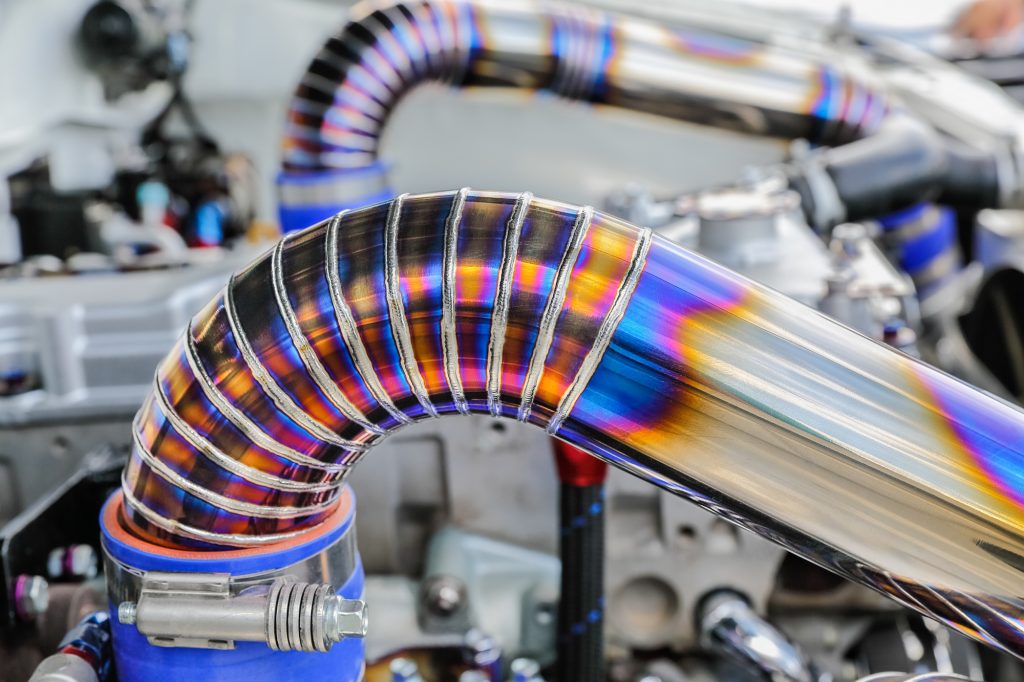
Similarly, extend the post-flow period to ensure titanium is well protected after you finish the weld while it cools. Preheating usually isn’t required, but you can raise the temperature to 150°F (66°) if you suspect there is moisture.
The key to successful TIG welding titanium is consistency. The arc on thin titanium without using filler metal should be about equal to the electrode diameter. If you are using filler metal on thicker pieces, the maximum arc length should be about 1-1/2 times the electrode diameter. Make sure you feed the wire smoothly and continuously into the puddle. An intermittent dipping causes turbulence and may result in contamination.
Checking Weld Results – Titanium post weld color
When TIG welding titanium, the color of the weld can give a good indication of the quality of the weld. A properly welded seam will appear silvery grey in color, and any differences can be a sign of contaminants and poor shielding. Silver to straw to brown titanium welds are typically acceptable. As you get into blues, greens, grays, and eventually white, these welds are unacceptable. You cannot repair these, so you will need to cut them off and start over.
Visual inspection can also include checking for defects such as porosity, burn through or improper penetration. These are easily noticeable, and holes or uneven welds are never a sign of a good weld. In industrial applications, welds can be subjected to various NDT and destructive tests.
Post Weld Treatment
Titanium usually doesn’t require post-weld or pre-weld heat treatment. However, specific applications can call for annealing or stress relief. These improve the ductility and machinability of the welds and reduce the risk of cracking and distortion. Most titanium grades are typically stress-relieved at about 1000°F (538°C) for 45 minutes and annealed at 1300°F (704°C) for two hours. There is no special equipment required for these processes, but a slightly oxidizing atmosphere can be used.
Tips For Successful TIG Welding Titanium
- Remember to clean the pieces, filler metal, and tungsten electrode
- Clip off the end of the titanium filler to expose pure titanium before welding.
- Check shielding gas for leaks or flaws that can contaminate the weld with oxygen or moisture
- Make sure adequate shielding is employed
- Allow 2-5 seconds of pre-flow to ensure proper protection of the joint prior to welding.
- Use a high-frequency arc start to avoid tungsten contamination.
- Always keep the filler metal within the envelope of the shielding gas. If you stop welding or the filler metal becomes contaminated, clip it and start new.
- Let shielding gas flow over the weld for 20 to 25 seconds after the weld to protect the seam as it cools below the contamination threshold.
- Pre- and post-weld heat treatment is typically not required, but you can use them in specific situations.
Final Thoughts
TIG welding titanium is a straightforward yet rewarding process. To successfully weld it, you can use the same approach like wehn welding stteel or nickel alloys, but you still need the right equipment, knowledge and experience. By following the steps outlined in our aricle, you can achieve successful results.
Through careful selection of filler material and welding parameters, the correct joint design for the intended application, and proper post-weld heat treatment, titanium can be welded with ease and safety. With the right approach and resources from our blog or organizations such as the American Welding Society, anyone can successfully fabricate titanium!
Resources:
- https://www.millerwelds.com/resources/article-library/only-as-strong-as-the-weld-best-practices-for-welding-titanium-tube-pipe
- https://www.longevity-inc.com/welding-articles/post/how-difficult-is-tig-welding-titanium
- https://workshopinsider.com/weld-titanium/
- https://www.powatone.com.au/blog/2017/7/4/how-to-weld-titanium
- https://www.weldingtipsandtricks.com/welding-titanium.html
- https://www.thefabricator.com/thefabricator/article/arcwelding/the-facts-on-welding-titanium





